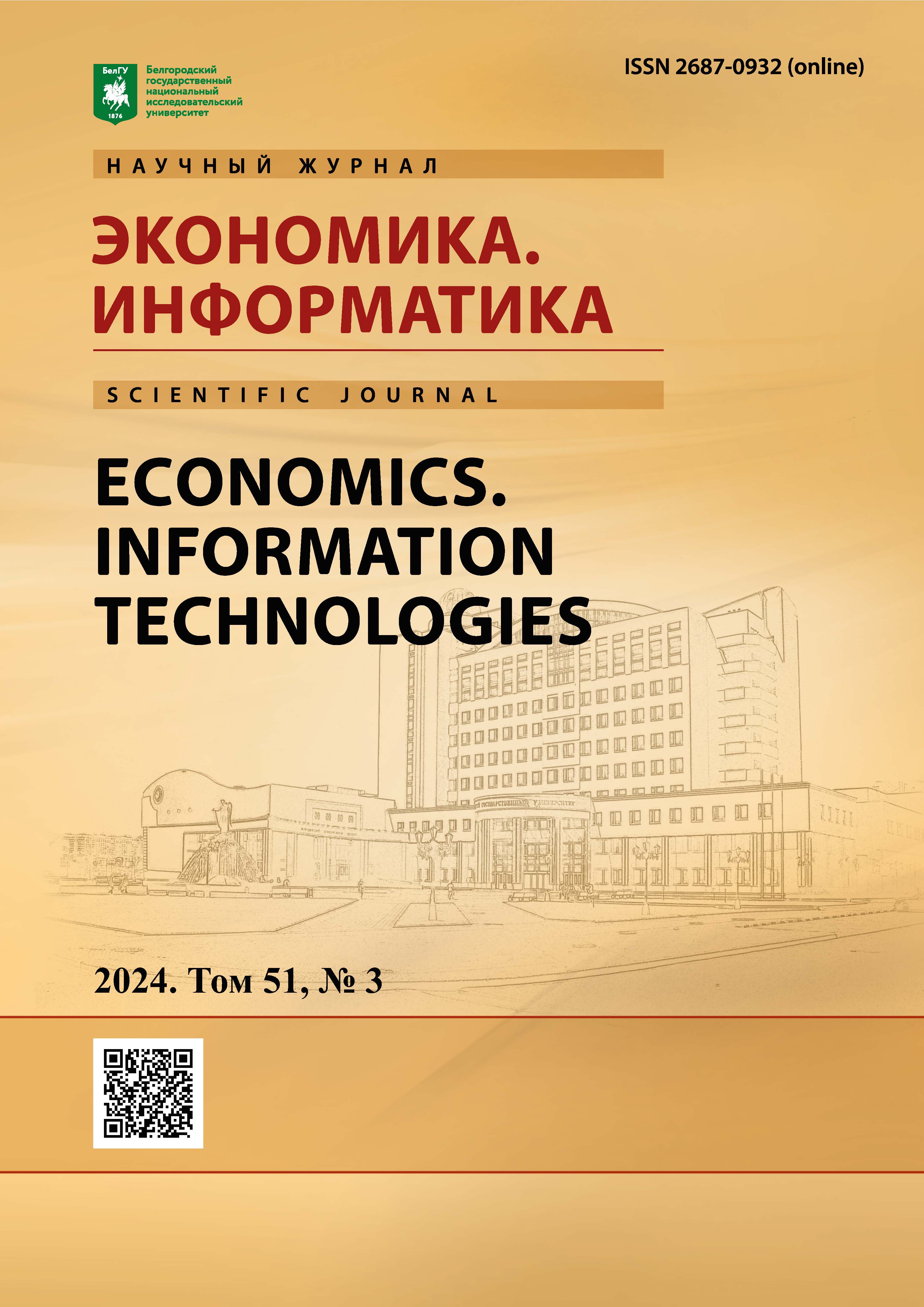Modeling and Forecasting of COVID-19 Dynamics in Krasnoyarsk Krai Residents Using a Single Healthcare Institution as an Example
DOI:
https://doi.org/10.52575/2687-0932-2024-51-3-643-656Keywords:
COVID-19, Regression model, Exponential models, Prophet library, LSTM, Machine learning, ForecastingAbstract
Making informed decisions in healthcare requires information about the spread of epidemics. While most existing models for forecasting COVID-19 spread focus on national or regional levels, this study proposes a solution for prediction at the level of individual healthcare institutions (LHIs). The aim of this research is to develop and evaluate the accuracy of models that predict the dynamics of key local indicators of COVID-19 spread within a single LHI, ultimately aiding in optimizing the allocation of medical resources. This research employs methods of regression analysis, exponential smoothing, long short-term memory (LSTM), XGBoost decision trees, and the Prophet model. Data on COVID-19 cases from the Krasnoyarsk Regional Hospital from March 2020 to December 2023 was utilized for model construction. The investigated models allow for assessing the dynamics of coronavirus infection within a single LHI, enabling the implementation of load balancing and resource allocation technologies both within the LHI and across other LHIs.
Downloads
References
Захаров В.В., Балыкина Ю.Е. 2021. Балансовая модель эпидемии COVID-19 на основе процентного прироста. Информатика и автоматизация, 20(5): 1034–1065.
Криворотько О.И., Кабанихин С.И., Зятьков Н.Ю., Приходько А.Ю., Прохошин Н.М., Шишленин М.А. 2020. Математическое моделирование и прогнозирование COVID-19 в Москве и Новосибирской области. Сибирский журнал вычислительной математики, 23(4): 395–414.
Омельяновский В.В., Семёнова Т.В., Лукъянцева Д.В., Федяев Д.В., Шалаева Е.А. 2020. Разработка методики расчета потребности во врачебных кадрах в здравоохранении Российской Федерации с использованием математической модели. Фармакоэкономика. Современная фармакоэкономика и фармакоэпидемиология, 13(4): 427–437.
Adhikari R., Agrawal R.K. 2013. An introductory study on time series modeling and forecasting. arXiv preprint arXiv:1302.6613.
IHME COVID-19 Forecasting Team. 2021. Modeling COVID-19 scenarios for the United States. Nature medicine, 27(1): 94–105.
Fanelli D., Piazza F. 2020. Analysis and forecast of COVID-19 spreading in China, Italy and France. Chaos, Solitons & Fractals, 134: 109761.
Grober T., Grober O., Savchenko O. 2020. An innovative approach to the study of the model of a medical institution. In E3S web of conferences, 210:11002.
Hu Z., Ge Q., Li S., Jin L., Xiong M. 2020. Artificial intelligence forecasting of covid-19 in China. arXiv preprint arXiv:2002.07112.
Lacasa L., Challen R., Brooks-Pollock E., Danon L. 2020. A flexible method for optimising sharing of healthcare resources and demand in the context of the COVID-19 pandemic. PLoS ONE, 15(10): e0241027.
Lee K., Agrawal A., Choudhary A. 2017. Forecasting influenza levels using real-time social media streams. IEEE International Conference on Healthcare Informatics (ICHI): 409–414.
Luo J., Zhang Z., Fu Y., Rao F. 2021. Time series prediction of COVID-19 transmission in America using LSTM and XGBoost algorithms. Results in Physics, 27: 104462.
Papastefanopoulos V., Linardatos P., Kotsiantis S. 2020. COVID-19: a comparison of time series methods to forecast percentage of active cases per population. Applied sciences, 10(11): 3880.
Petropoulos F., Makridakis S. 2020. Forecasting the novel coronavirus COVID-19. PloS one. 15(3): e0231236.
Taylor S.J., Letham B. 2018. Forecasting at scale. The American Statistician, 72(1): 37–45.
Wei W., Wang G., Tao X., Luo Q., Chen L., Bao X., Liu Y., Jiang J., Liang H., Ye L. 2023. Time series prediction for the epidemic trends of monkeypox using the ARIMA, exponential smoothing, GM (1, 1) and LSTM deep learning methods. Journal of General Virology, 104(4): 001839.
Xian X., Wang L., Wu X., Tang X., Zhai X., Yu R., Qu L., Ye M. 2023. Comparison of SARIMA model, Holt-winters model and ETS model in predicting the incidence of foodborne disease. BMC Infectious Diseases, 23(1): 803.
Yin R., Luusua E., Dabrowski J., Zhang Y., Kwoh C.K. 2020. Tempel: time-series mutation prediction of influenza A viruses via attention-based recurrent neural networks. Bioinformatics, 36(9): 2697–2704.
Zhang L., Bian W., Qu W., Tuo L., Wang Y. 2021. Time series forecast of sales volume based on XGBoost. In Journal of Physics: Conference Series, 1873 (1): 012067.
Abstract views: 245
Share
Published
How to Cite
Issue
Section
Copyright (c) 2024 Economics. Information Technologies

This work is licensed under a Creative Commons Attribution 4.0 International License.


